News Articles
Charlotte HEALTH&FITNESS magazine, January, 2006
More than half of the adult population ultimately develops a weakness in the circulatory system, which leads to varicose and spider veins. So… next question – what to do about it?
No one knows the exact reason why the valves that push the blood through the veins break down, but genetics plays the strongest role. Hormones also are thought to be involved. Varicosity often appears during pregnancy and menopause, and women taking birth control pills or hormone replacement therapy are more prone to it. Varicosity develops in twice as many women as men.
In addition to being unsightly, varicose veins can cause leg fatigue, swelling, aching and sometimes throbbing. People should consult with a physician if they experience discomfort. Lack of treatment can result in constantly swollen legs, an itchy rash and, because circulation becomes compromised, ulcers on the inner side of the ankle, especially in older adults.
TYPES OF VARICOSE VEINS
Other varicosity issues involve veins that are not related to the greater saphenous vein, as well as the smaller veins that are just under the skin that form spider veins.
TREATMENT OPTIONS
In endovenous procedures, the doctor numbs the skin using a local anesthetic and inserts a laser fiber. When activated, this creates a gradual heat buildup, by heating the water in the vein wall. The collapse of the vein causes it to close permanently, forcing the blood to reroute itself into adjacent healthy veins. The success rate at two years stands at 95%, judging by the procedures we’ve done. This new FDA approved technology is called CTEV, which stands for Cool Touch Endovenous Laser ablation. Dr Munavalli, of the Goslen Aesthetic and Skin Care Center, is the only physician in Charlotte with this laser, and has been performing this procedure for over 2 years.
For some patients, treatment involves closing off just the greater saphenous vein, which ends the varicosity problem. Others, though, will need further treatment for adjacent veins. And, of course, many patients have varicosity that is unrelated to the GSV.
For patients with varicosity unrelated to the GSV, ambulatory phlebectomy is advised, in which the doctor makes small needle holes in the skin and pulls the vein out with a hook. The small needle holes are at the top and bottom of the vein. Pulling the vein out in this way breaks the connections among the veins, thus freeing them for removal. This procedure leaves virtually no scars, because the needle holes heal up completely.
For varicose veins just under the skin – including spider veins – Dr. Munavalli advises using sclerotherapy, which involves injecting a solution into the vein to seal it off. (Laser is effective for facial spider veins but not for those on the legs because of their variance in size and depth.) Dr Munavalli has replaced saline solution previously used for this, which caused pain, with a type of glycerin solution that does not sting and is more effective. Sclerotherapy requires two to four sessions to collapse the vein, and it can take several months for the vein fully to disappear. Because treating spider veins usually is considered a cosmetic procedure, insurance often does not cover it, although painful,bulging veins are typically covered by insurance. Costs run from $250 to $450 per session for sclerotherapy.
RISKS
WHO AND WHERE
All of these procedures are outpatient, done either in the doctor’s office, a surgicenter or outpatient surgery center.
